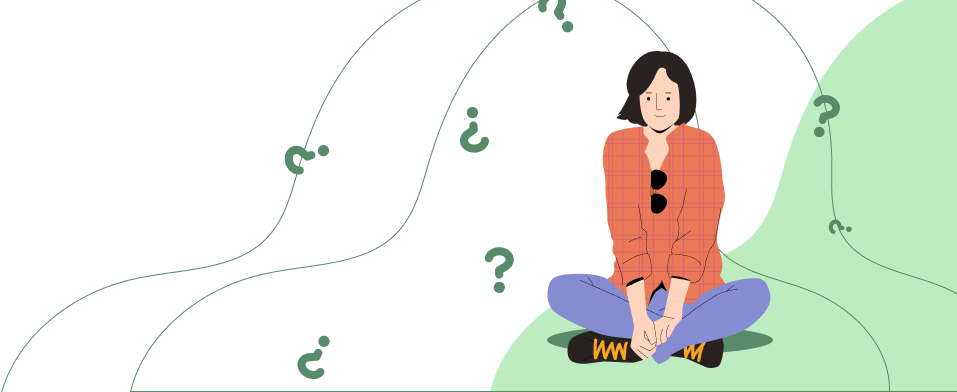Introduction
AI has revolutionized many fields, including therapy, by providing instant support, data-driven insights, and tools for managing mental health. However, like any technology, AI is not without its flaws. Two prominent issues in AI behavior are hallucination—where the system generates incorrect or fabricated information—and circular reasoning, where it becomes trapped in repetitive patterns. For therapists and users alike, understanding these limitations is crucial for maximizing AI’s benefits while minimizing risks.
What Is AI Hallucination?
AI hallucination occurs when an AI generates responses that are plausible-sounding but factually incorrect or nonsensical. In therapy, this could manifest as:
- Fabricating Evidence: AI might create fake studies, citations, or therapeutic techniques that don’t exist.
- Misinterpreting Input: When provided ambiguous or complex queries, AI can misunderstand and deliver irrelevant or harmful suggestions.
- Overconfidence: Hallucinatory responses are often delivered with undue confidence, making them harder to spot.
For instance, an AI might confidently suggest, “According to a 2023 Stanford study, mindfulness cures all anxiety disorders,” despite no such study existing. This can be particularly problematic in therapy, where trust in the AI’s guidance is paramount.
Circular Reasoning in AI
Circular reasoning in AI occurs when the system gets stuck in repetitive loops without progressing toward meaningful insights. Examples in therapy include:
- Repeated Suggestions: AI might keep offering the same generic advice (e.g., “Try deep breathing”) without addressing the root problem.
- Limited Context Understanding: If a user revisits the same issue, the AI may fail to adapt or provide nuanced responses, leading to frustration.
This behavior can alienate users and diminish the perceived value of AI in therapy.
How to Identify Hallucinations and Circular Reasoning
Cross-Check Information:
If an AI references studies, techniques, or statistics, verify them with credible sources.
Notice Patterns:
Repeated or overly generic responses may signal the AI is stuck in a loop.
Ask Clarifying Questions:
If a response seems off, probe further. Hallucinating AI often struggles to maintain logical consistency.
Making the Best Use of AI in Therapy
While these issues can pose challenges, they are not insurmountable. Here’s how therapists and users can leverage AI effectively:
For Therapists:
- Supervise AI Responses: Always review AI interactions to ensure accuracy and relevance.
- Use AI as a Complement: Let AI handle routine tasks like scheduling or session summaries, while you focus on the human connection.
- Educate Clients: Inform users that AI is a tool, not a replacement for professional judgment.
For Users:
- Set Realistic Expectations: Understand that AI offers support, not comprehensive care.
- Seek Human Guidance: Use AI as a bridge between sessions, but rely on therapists for critical interventions.
- Provide Feedback: Many platforms allow feedback on AI responses, helping improve future interactions.
How Talk Therapy Stands Out
Talk Therapy sets itself apart by combining the power of AI with the expertise of licensed therapists. Unlike other AI therapy platforms, Talk Therapy ensures that every interaction is supervised by a qualified professional, reducing the risks of hallucinations and circular reasoning. Here’s how Talk Therapy differentiates itself:
- Therapist-Guided AI: All AI interactions are monitored and refined by licensed therapists to ensure accuracy, relevance, and empathy.
- Customizable Guidance: Therapists provide tailored instructions for the AI, ensuring responses align with the client’s specific needs and therapy goals.
- Seamless Collaboration: Talk Therapy integrates human oversight into every step, blending the efficiency of AI with the depth of human care.
- Focus on Progress: By pairing instant AI support with therapist-driven insights, Talk Therapy delivers measurable outcomes, ensuring clients feel supported and understood.
Balancing Innovation with Awareness
Despite its flaws, AI has immense potential in therapy when used thoughtfully. Recognizing its limitations—such as hallucination and circular reasoning—allows users and therapists to harness its strengths while mitigating risks. As AI evolves, so too will its ability to support mental health care more effectively.
By staying informed and engaged, therapists and users can ensure that AI becomes a trusted ally in the journey toward better mental health.
Search
- Type here to search


